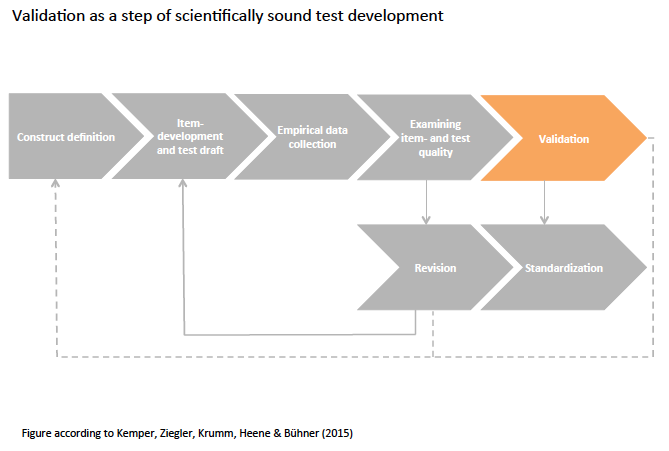Validity
When a test actually measures what it claims to measure
By Svenja Klinkenberg, Member of the R&D-Team at LUXXprofile
Currently, we are in the process of checking the validity of the LUXXprofile. What is this about? – In short: A test is valid, if it measures what it is supposed to measure. Validity estimates the accuracy of a test and is – next to objectivity and reliability (refer to blog entry: Reliability – How reliable are the items of the LUXXprofile?) - an important criterion for the quality of a test.
There are different aspects of validity: content validity, criterion-based validity and construct validity. Especially the criterion-based validity is important when it comes to test development. To prove criterion-based validity, test results are compared to an external criterion. Upon validating the LUXXprofile, the question arises whether the test can predict behavior accurately – which is the ultimate goal of a personality test. An example: The number of friends can be the external criterion for a relationship motive. The test scores can be regarded as valid, if it can be shown that people with a stronger relationship motive tend to have more friends. During the validation process it is statistically examined whether people with a higher motive have statistically significant more friends than people with a medium or low motive. Examining the correlations can check this. In this example, we encounter a high correlation if the data shows proof for this assumption.
Applying this procedure, a number of criteria were chosen to validate the different motives of the LUXXprofile. Other examples of possible criteria are the amount of restaurant visits, memberships in sports clubs or the amount of donations per year.
